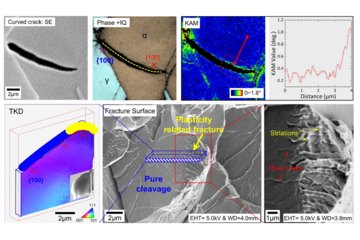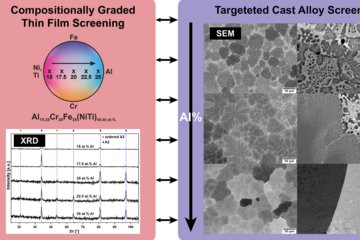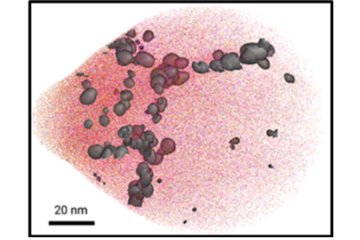All genres
661.
Talk
Grain boundary embrittlement in copper by sulfur. DPG Tagung 2017, Dresden, Germany (2017)
662.
Talk
Advanced Atom Probe Tomography. 25th Annual Meeting of the German Crystallographic Society, Karlsruhe, Germany (2017)
663.
Talk
Understanding plasticity in microstructure tribology: experiments and simulations. Friction, Wear and Wear Protection 2017, Ettlingen, Germany (2017)
664.
Talk
Resolving the interplay of nanostructure and mechanical properties in advanced materials. Karlsruher Werkstoffkolloquium im Wintersemester 2016/2017, Karlsruhe, Germany (2017)
665.
Talk
Atomic Scale Characterization of Complex Materials. Physikalisches Kolloquium, Fakultät für Mathematik und Physik, Universität Freiburg, Freiburg, Ger,amy (2017)
666.
Talk
Towards thermally stable nanocrystalline alloys with exceptional strength: Cu–Cr as a case study. 16th International Conference on Rapidly Quenched and Metastable Materials (RQ16), Leoben, Austria (2017)
667.
Talk
High Temperature Plasticity of Cu–Cr Nanolayered and Chemically Nanostructured Cu–Cr Films. 2017 TMS Annual Meeting & Exhibition, San Diego, CA, USA (2017)
668.
Talk
Towards probing the barrier strength of grain boundaries for dislocation transmission. Electronic Materials and Applications 2017, Orlando, FL, USA (2017)
669.
Talk
Do we understand dislocation transmission through grain boundaries? PICS meeting, Luminy, Marseille, France (2017)
670.
Talk
Fracture Behavior of Nanostructured Heavily Cold Drawn Pearlite: Influence of the Interface. TMS 2017, San Diego, CA, USA (2017)
671.
Talk
Unusual Brittle to Ductile Transition in Single Crystalline Silicon: In situ micro scale fracture studies at elevated Temperatures. TMS 2017, San Diego, CA, USA (2017)
672.
Talk
New Insights into Plasticity at Grain Boundaries by Nano- and Micromechanics. TMS 2017, San Diego, CA, USA (2017)
673.
Talk
Deformation Induced Martensite: A Thermodynamic Study. TMS 2017, San Diego, CA, USA (2017)
674.
Talk
Can superlattice structures enhance the fracture toughness of ceramic coating? TMS 2017, San Diego, CA, USA (2017)
675.
Talk
Fracture testing of thin films: insights from synchrotron XRD and micro-cantilever experiments. 2016 MRS Fall Meeting, Boston, MA, USA (2016)
676.
Talk
Ab-Initio Guided Design of Twinning Induced Plasticity and Weight Reduced Austenitic Steels. MRS Fall Meeting, Boston, MA, USA (2016)
677.
Talk
Chemical demixing and thermal stability of supersaturated nanocrystalline CuCr alloys: Insights from advanced TEM. MS&T '16, Materials Science & Technology 2016 Conference & Exhibition, Salt Lake City, UT, USA (2016)
678.
Talk
Size and orientation effects on the elasto-plastic transition and deformation mechanism of twinning-induced plasticity steel micro-pillars. MSE 2016 Conference , Darmstadt, Germany (2016)
679.
Talk
Mechanical Testing at Microscopic Length Scale. EMMC 15 - 15th European Mechanics of Materials Conference, Brussels, Belgium (2016)
680.
Talk
Resolving the interplay of nanostructure and mechanical properties by advanced electron microscopy. MSE Conference, Materials Science and Engineering, Darmstadt, Germany (2016)











